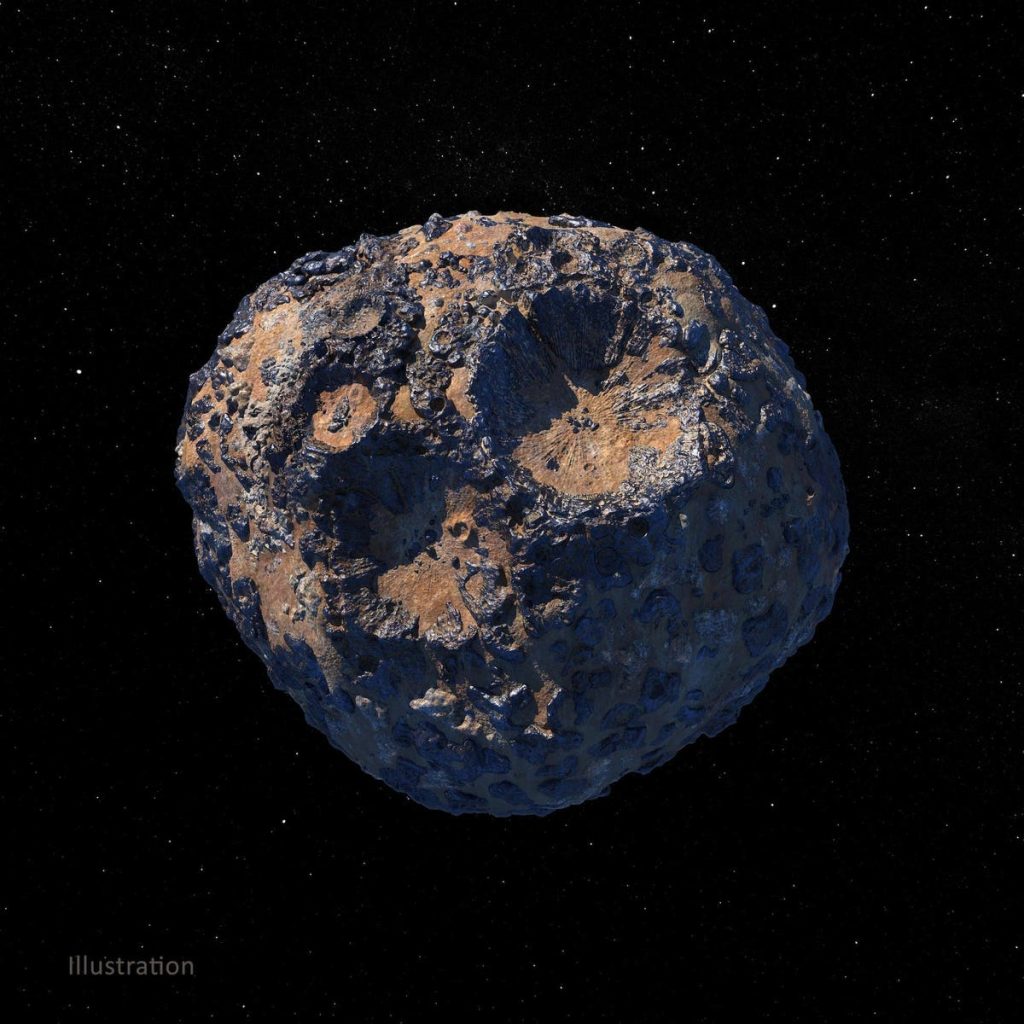You’ve probably heard of NASA’s Psyche mission, which launches later this week. Not because it’s NASA’s first mission to launch atop a Space Falcon Heavy (partly) reusable rocket. Not because it’s the first to visit an M-class asteroid (the “M” stands for metallic).
No, the reason you’ve probably come across Psyche is because of the claim that it could be worth more than the global economy on our own planet. The number bandied about is $10,000 quadrillion, which is based on the amount of iron, nickel and gold that may be present in this unique planetary body.
On Oct. 5, NASA will begin a six-year journey to 16 Psyche, a 140 mile (226 kilometers) wide asteroid that’s thought to be the exposed ancient core of a failed proto-planet from the early solar system.
It could offer scientists a window into how planets forms and what Earth’s core looks like.
But could it really contain enough precious metals to make every person on Earth a billionaire?
Of course not.
False In Every Way
“It’s my fault,” said Lindy Elkins-Tanton, principal investigator of Psyche, Arizona State University, in a press briefing. “I did that calculation.” It’s based on estimates of the metals that could be present in the unusually reflective, dense asteroid. “It makes such a great headline, but it’s false in every way because we have zero technology to bring Psyche back to Earth,” she added.
It’s impossible to tow an asteroid back to Earth. Besides, that would be a very dangerous proposition. “Psyche is not ever going to make us rich—even though its made of metal—because it’s so far away … we are never bringing it home,” said Elkins-Tanton. Psyche is way to far away from Earth to ever be a target for mining.
NASA Does Not Mine Asteroids
And, no, the Psyche spacecraft isn’t going to the distant asteroid to bring home lumps of rock. “We are not going there to mine an asteroid—NASA does not mine asteroids!” said Elkins-Tanton. “There are other metal objects in the solar system nearer to Earth for humans to think about in the future, but that’s not our mission.”
Although scientists don’t know what 16 Psyche is going to look like, it’s certainly not going to have a polished metallic surface.
Even if it was possible to bring home a large quantity of metals from 16 Psyche or drag it back into Earth’s orbit—an alarming prospect on many levels —it would likely be a catastrophic mistake for financial reasons. “It would crash the metals market and it would literally be worth nothing,” said Elkins-Tanton. “So the final value would be zero—calculating the value of it was just a fun intellectual exercise.”
Origin Story
The story dates back to January 2017, when the Psyche mission was green-lit, when Elkins-Tanton was asked by PBS of the likely value of the asteroid on the current metals market. “I just did the simplest possible calculation just using some of the likely constituents, not even all of them, and came up with this mind boggling number,” said Elkins-Tanton in an interview in 2022.
16 Psyche—the sixteenth asteroid ever discovered—was first observed by Italian astronomer Annibale de Gasparis on March 17, 1852. It was named after the Greek goddess of the soul.
Wishing you clear skies and wide eyes.
Read the full article here










